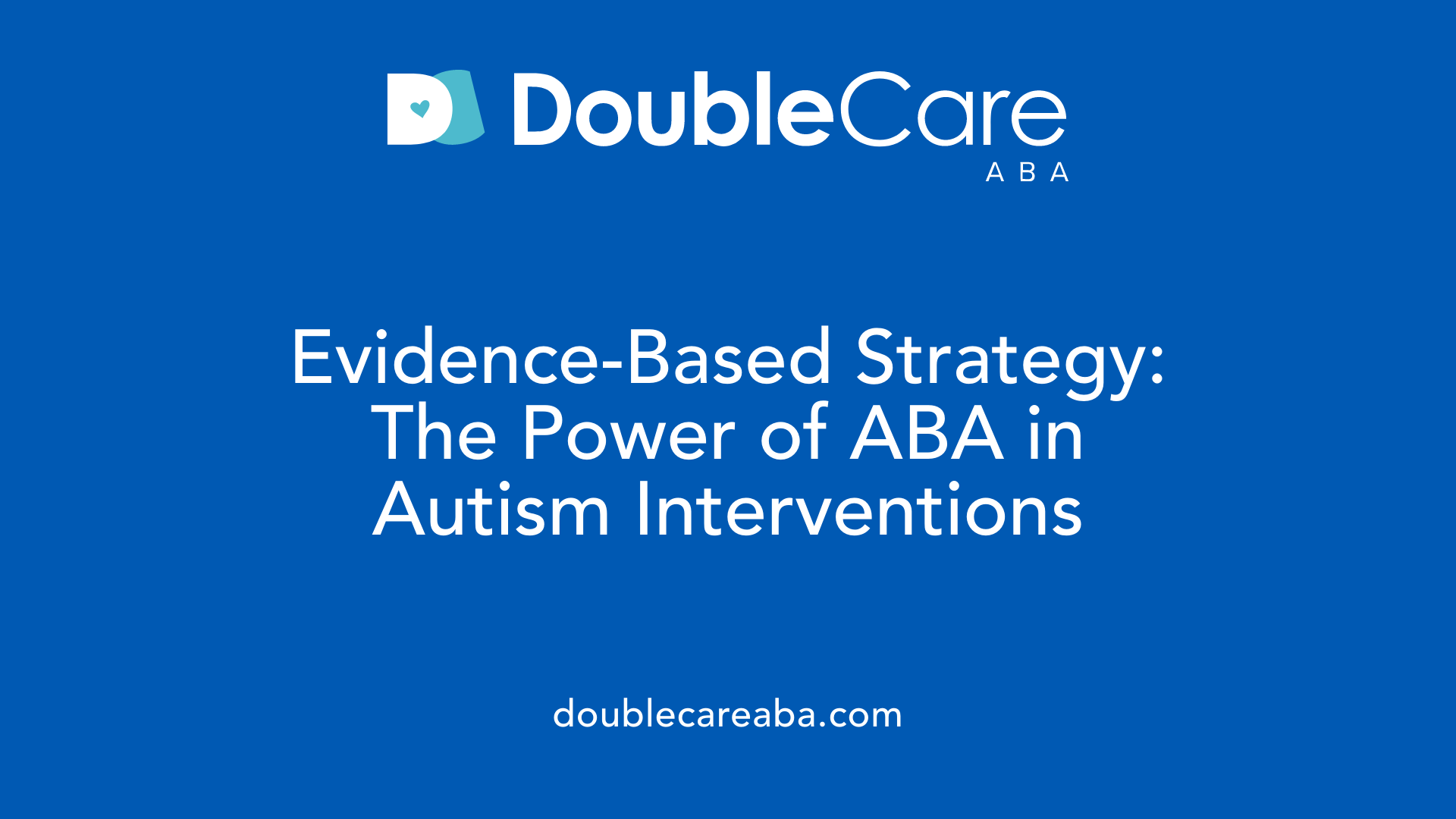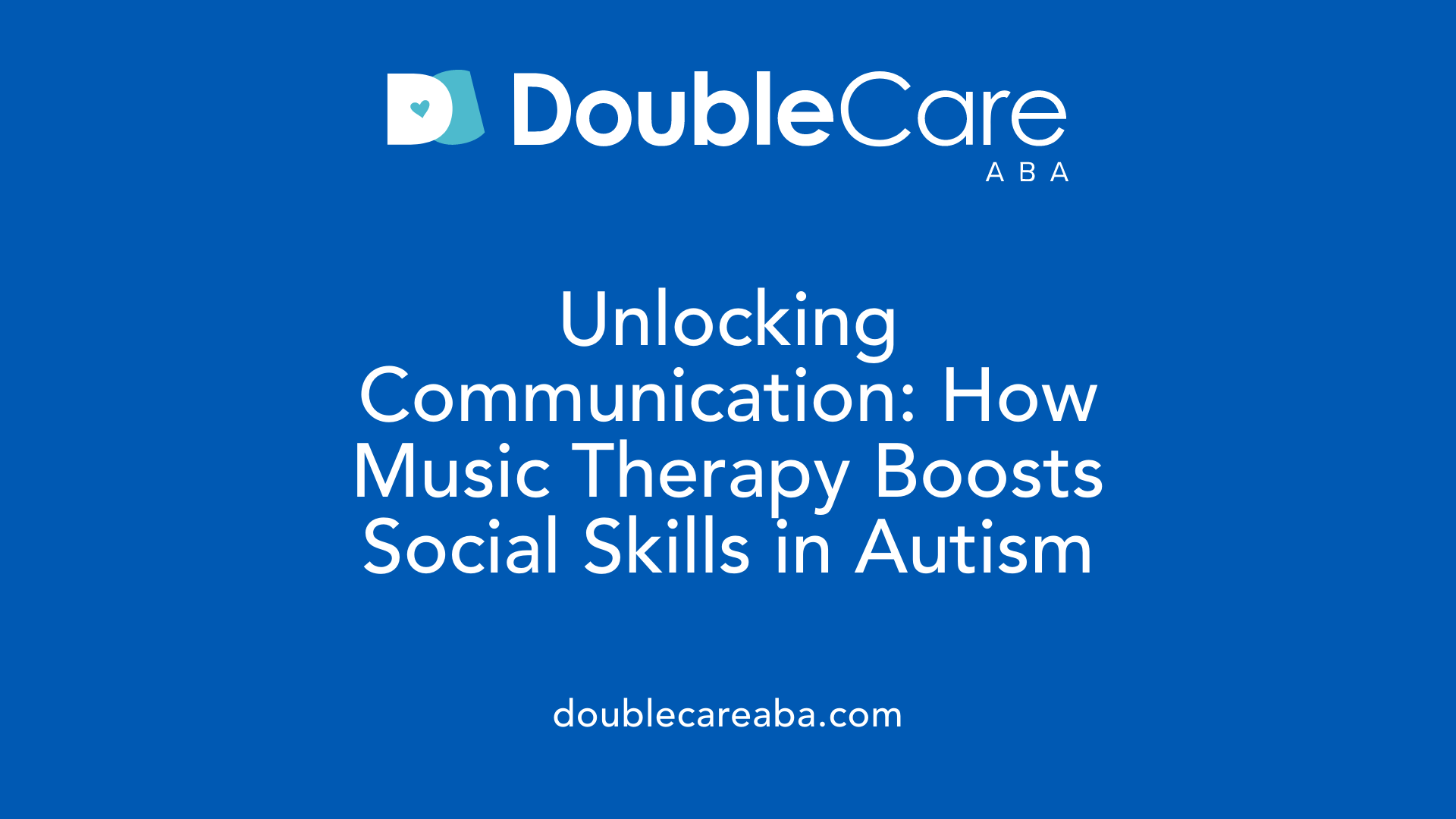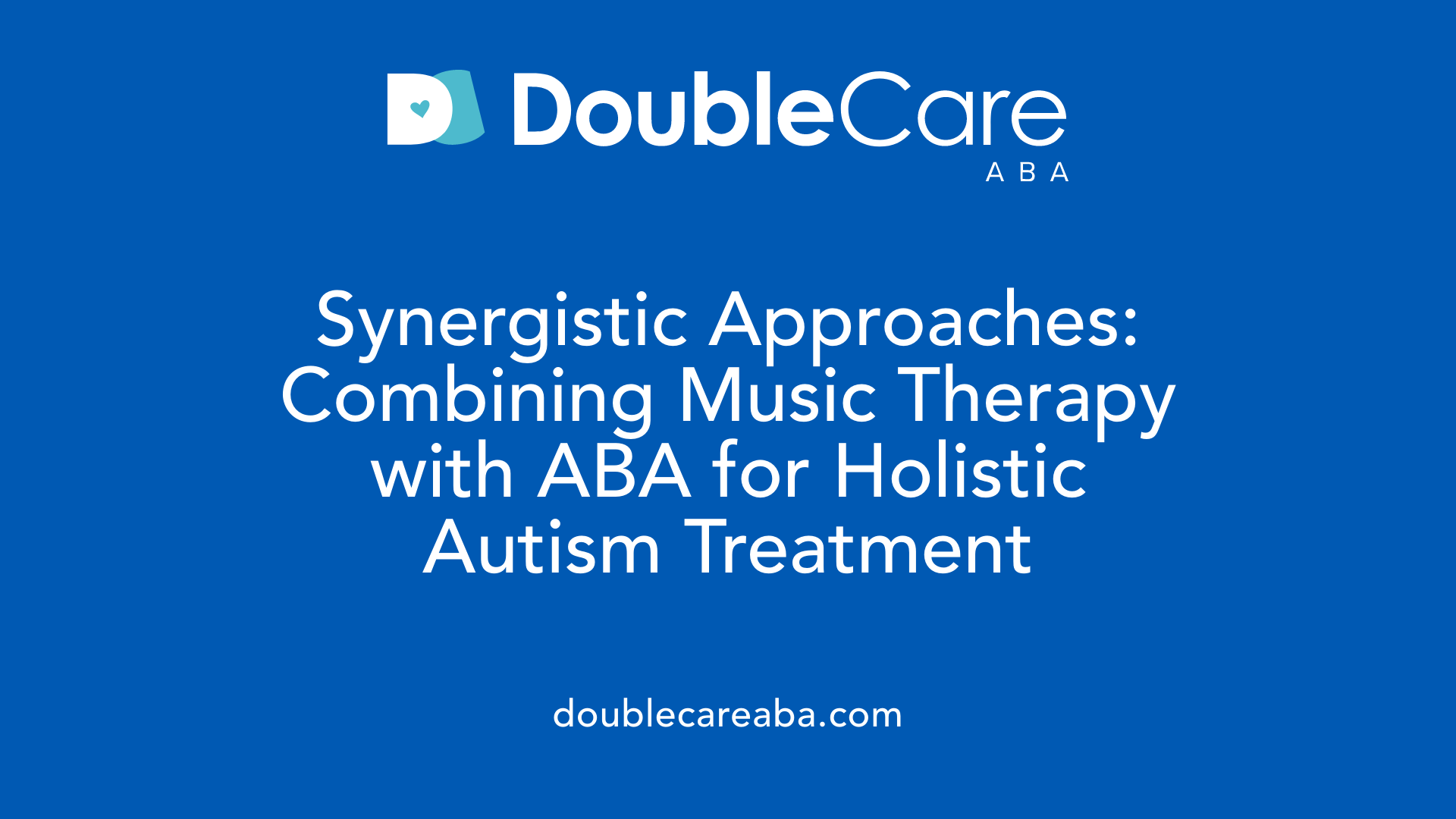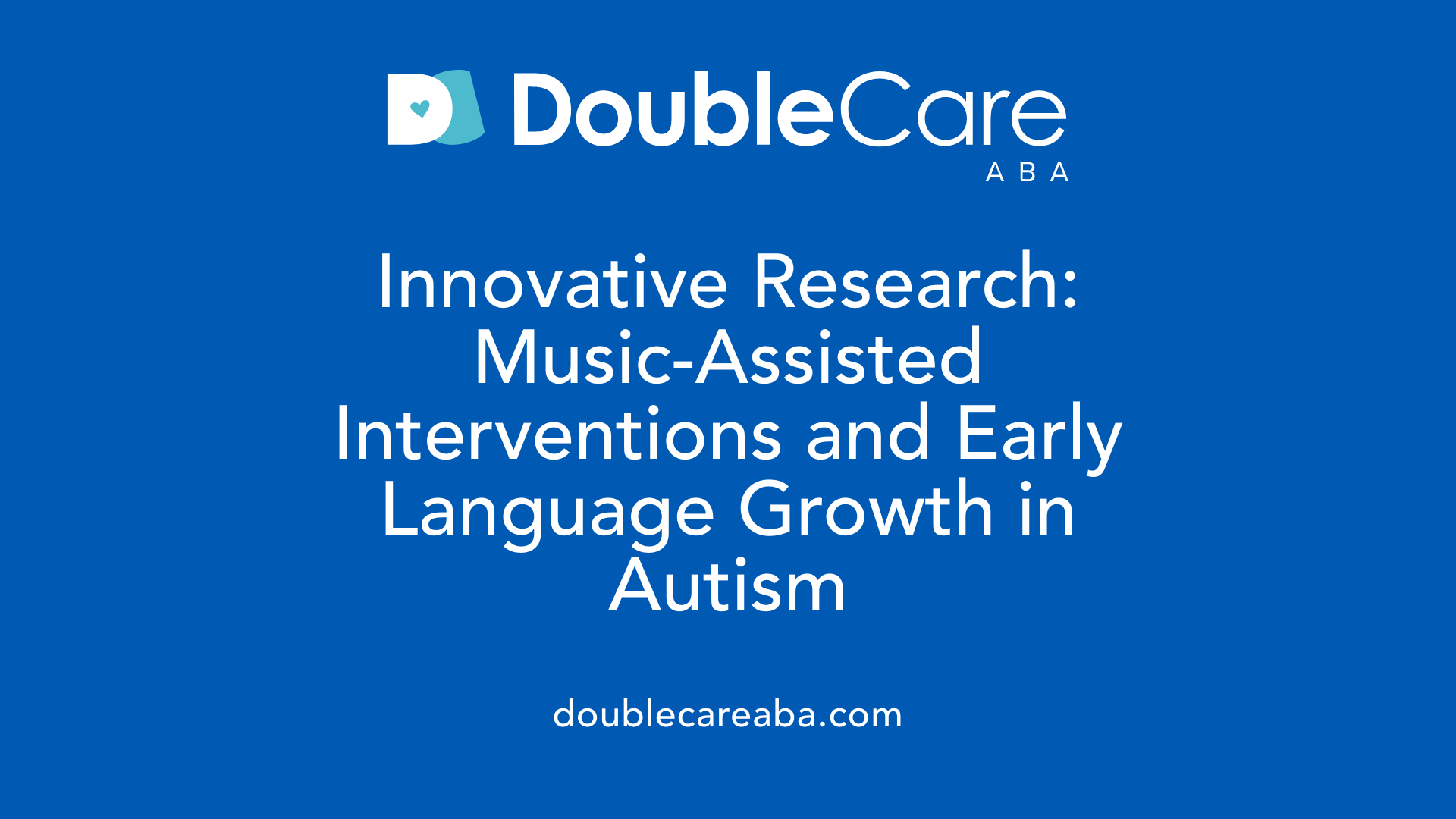Autism and the Benefits of Music in Learning
Unlocking Potential: How Music Therapy Enhances Learning for Individuals with Autism

The Harmonious Intersection of Music and Autism Therapy
Music therapy has emerged as a powerful tool in enriching the lives of individuals with autism spectrum disorder (ASD). Beyond its artistic appeal, this form of therapy taps into the unique ways autistic individuals process and respond to auditory stimuli, offering benefits that extend into communication, socialization, motor skills, and emotional well-being. This article explores how music therapy complements established behavioral interventions like Applied Behavior Analysis (ABA), the mechanisms behind its therapeutic effects, and the promising research supporting its use in learning and development for those on the autism spectrum.
Understanding Applied Behavior Analysis (ABA) and Its Role in Autism Treatment

What is Applied Behavior Analysis (ABA) therapy and how is it used in treating autism?
Applied Behavior Analysis (ABA) therapy is a scientifically supported approach designed to improve socially significant behaviors in individuals with autism. It focuses on analyzing the Antecedents, Behaviors, and Consequences (the ABCs) to understand and modify behavior. Techniques such as positive reinforcement, Discrete Trial Training (DTT), and Pivotal Response Treatment (PRT) are applied to teach skills including communication, social interaction, and adaptive behaviors.
ABA programs are tailored to each individual’s needs, often involving intensive sessions of 25 to 40 hours per week over a period of one to three years. Early intervention with ABA has been shown to foster notable gains in language abilities, cognitive skills, and overall social functioning, making it a widely recognized evidence-based practice in autism treatment.
Who typically provides ABA therapy for individuals with autism?
ABA therapy services are generally delivered by licensed and trained professionals such as Board Certified Behavior Analysts (BCBAs), Licensed Behavior Analysts (LBAs), and Registered Behavior Technicians (RBTs). These experts develop and implement personalized treatment plans rooted in scientific research.
ABA can be administered in diverse environments such as homes, schools, and community settings to promote skill generalization. Collaboration with families and other related therapists, including speech and occupational therapists, ensures a comprehensive support system. Providers strive to deliver interventions that are both effective and aligned with the unique goals of each individual.
What are the benefits and outcomes of ABA therapy?
Research consistently demonstrates that ABA therapy leads to significant improvements in language, social engagement, and reduction of challenging behaviors. It facilitates the development of communication abilities and daily living skills, enhancing overall quality of life. When integrated early and delivered intensively, individuals with autism often gain greater independence and improved social participation.
| Aspect | Description | Examples |
|---|---|---|
| Therapy Approach | Evidence-based behavioral strategies | Positive reinforcement, DTT, PRT |
| Providers | Certified professionals specializing in ABA | BCBAs, LBAs, RBTs |
| Settings | Flexible delivery environments | Home, school, community |
| Outcomes | Improved social skills, language, and behavior management | Enhanced communication, reduced problem behavior |
ABA remains a cornerstone in autism interventions, valued for its versatility, customizability, and proven effectiveness across various developmental domains.
The Unique Therapeutic Contributions of Music Therapy for Autism
How Music Therapy Engages Both Brain Hemispheres
Music therapy stimulates activity in both hemispheres of the brain, fostering enhanced learning and integration. This bilateral brain engagement helps autistic individuals process information more effectively, contributing to improved communication and cognitive function.
Use of Rhythmic Patterns and Repetitive Songs
Therapeutic interventions often involve rhythmic patterns, call-and-response activities, and repetitive songs. These elements not only capture attention but also facilitate memory, language development, and social interaction skills. The predictable structure of rhythms provides a comforting framework that supports engagement and learning.
Emotional Expression and Communication Improvements
Music therapy offers a non-threatening environment where individuals with autism can explore and express emotions. Through musical activities, they often improve in verbal communication and social responsiveness. Singing and shared musical experiences create opportunities for emotional recognition and regulation, easing difficulties with social connection.
Motor Skills and Coordination Benefits
Activities using musical instruments and rhythmic movement improve physical coordination and fine motor skills. Regular engagement in music therapy sessions can lead to better motor planning and control, supporting daily functional abilities and enhancing overall physical development.
Sensory Regulation and Anxiety Reduction Through Music
Many autistic individuals experience sensory overload; music therapy assists by providing a rhythmic structure that imparts predictability and security. This helps reduce anxiety and promotes relaxation, making it easier for individuals to manage sensory inputs and increase focus during learning and social interactions.
Music Therapy in Enhancing Communication and Social Skills for Autistic Individuals

Role of music in improving verbal skills and speech
Music therapy plays a significant role in enhancing verbal language and speech skills among autistic individuals. Using engaging musical activities, such as singing and rhythmic patterns, therapists help children develop and retain key communication skills. Music-based curriculum elements even support learning of concepts like numbers and print recognition, laying a foundation for broader educational development.
Increasing joint attention through musical activities
Joint attention, which is often challenging for children with autism, can be improved through music therapy. Systematic reviews and pilot studies have shown that musical interventions boost children's ability to focus together on shared tasks, a critical component for effective communication and social interaction.
Facilitating social interactions and problem-solving
Music provides a natural and enjoyable context for social engagement. Group music activities promote problem-solving skills and help children enter routines more smoothly. These experiences enhance both social and communication skills, making interactions more meaningful and less intimidating.
Use of call and response and other song-based methods
Specific methods, like repetitive songs and call and response activities, are used widely in music therapy to foster communication. These techniques encourage expression of feelings and improve conversational turn-taking, which are vital for building effective communication patterns.
Comparisons of music therapy with traditional speech and occupational therapies
Compared to traditional therapies such as speech and occupational therapy, music therapy covers broader developmental domains while being more engaging for participants. It effectively complements behavioral interventions like Applied Behavior Analysis (ABA), potentially enhancing overall treatment outcomes due to its multi-sensory and emotionally supportive nature.
Integrating Music Therapy with Behavioral Interventions like ABA

How music therapy complements and enhances ABA therapy
Applied Behavior Analysis (ABA) therapy is a cornerstone in autism intervention, focusing on improving communication, social skills, and daily living through structured, evidence-based techniques like positive reinforcement. Music therapy complements ABA by engaging children in a more dynamic and enjoyable way, making learning experiences more motivating. The use of rhythmic patterns, singing, and musical instruments introduces a multisensory approach that helps reinforce behavioral goals targeted by ABA.
Broader developmental coverage of music therapy
Unlike ABA, which centers predominantly on behavior modification, music therapy addresses a wider range of developmental domains simultaneously. These include motor skills, emotional regulation, sensory processing, and cognitive abilities. For example, music's ability to stimulate both brain hemispheres enhances learning and coordination, while rhythmic activities improve motor planning and joint attention — essential skills that also benefit ABA outcomes.
Use of music to increase engagement and motivation
Music naturally captivates attention and reduces resistance to therapy for many autistic children. Repetitive songs and interactive rhythms create predictable frameworks that help children feel secure and focused. This heightened engagement fosters greater participation in ABA strategies, amplifying the effects of behavioral interventions. Regular involvement in music therapy sessions fosters sustained motivation to practice and learn.
Evidence supporting combined therapy approaches
Research supports meaningful benefits when music therapy is integrated alongside behavioral treatments like ABA. Meta-analyses and pilot studies demonstrate improvements in communication, socialization, and verbal skills that surpass those seen with single methodologies alone. Furthermore, music-assisted programs (MAP) have shown promising results in enhancing early vocabulary development, social responsiveness, and parent-child interaction.
Music therapy's role within multidisciplinary treatment models (e.g., SCERTS)
Music therapy is increasingly recognized within comprehensive frameworks such as the SCERTS model, which emphasizes social communication, emotional regulation, and transactional support. By addressing overlapping goals in language, psychosocial, and motor skills, music therapy strengthens treatment plans devised by multidisciplinary teams. It offers a non-threatening, engaging environment that complements the structured strategies of ABA, enabling more holistic support tailored to each child's unique needs.
Research Insights: Music-Assisted Programs and Early Language Development in Autism

What is the Music-Assisted Program (MAP) intervention?
The Music-Assisted Program (MAP) is an innovative intervention designed to support language learning in preschool children with autism, particularly those with minimal verbal abilities. MAP uses music as a therapeutic stimulus, incorporating songs and rhythmic activities aimed at enhancing early vocabulary acquisition and social communication.
How is MAP delivered?
MAP is delivered primarily online through therapist-led video sessions, paired with a smartphone app to facilitate home-based practice. Children and their parents participate in two 45-minute sessions weekly over 18 weeks. This hybrid approach combines direct professional coaching with accessible technology to ensure consistent engagement and reinforcement.
How does MAP compare to traditional social communication interventions?
MAP was evaluated against a best-practice social communication intervention (SCIP-I) in a randomized controlled trial. While both interventions focus on improving language and social skills, MAP uniquely integrates musical elements to enhance attention, memory, and motivation.
What study results were observed?
Children receiving MAP showed greater improvements in social responsiveness, understanding of words and phrases, and parent–child interaction compared to the SCIP-I group. These findings suggest that music-based techniques may provide additional benefits in nurturing early vocabulary and social engagement in autistic preschoolers.
Are music-based interventions feasible and acceptable?
The study demonstrated the feasibility of recruiting families into this online RCT and delivering music-assisted therapy remotely. Parent interviews revealed high acceptability of the MAP approach, highlighting enthusiasm for its innovative and enjoyable format.
This promising evidence supports the potential of music-assisted programs as a scalable, effective tool for early language development in autism, warranting further clinical trials to confirm long-term benefits.
The Impact of Music on Emotional Regulation and Mental Well-being in Autism
How Does Music Therapy Create a Safe Space for Emotional Exploration?
Music therapy offers a non-threatening environment where individuals with autism can explore and recognize their emotions. The structured and predictable nature of music allows patients to express feelings safely, which is often challenging in traditional settings. This safe emotional outlet is crucial for improving regulation and mental well-being.
In What Ways Does Music Therapy Help Soothe Sensory Overload and Anxiety?
Many autistic individuals experience sensory overload, which can lead to heightened anxiety. Music therapy addresses this by using rhythmic structures and repetition to provide predictability and a sense of security. These elements help reduce sensory-induced stress, making it easier for individuals to calm down and relax.
How Does Music Encourage Relaxation and Emotional Regulation?
Through calming melodies, repetitive rhythms, and structured musical activities, music therapy promotes relaxation and supports emotional regulation. These musical interventions engage both hemispheres of the brain, reinforcing neural pathways that aid in managing emotions more effectively.
What Are the Effects of Musical Engagement on Mood and Attention?
Engagement with music enhances mood and attention in autistic individuals. The connection between rhythm, motor behavior, and memory for song helps improve focus and stimulate positive emotional responses. Such engagement can lead to improvements in learning and social interaction.
What Are the Broader Mental Health Benefits of Music Therapy?
Overall, music therapy offers significant mental health benefits by fostering emotional expression, reducing anxiety, and improving mood and attention. These improvements contribute to enhanced psychosocial functioning and quality of life for autistic individuals, supporting their overall mental well-being.
Practical Applications: Music Therapy in Educational Settings and Early Interventions

How is music therapy recognized in educational settings?
Music therapy is officially considered a related service under the Individuals with Disabilities Education Act (IDEA), which ensures children with autism have access to specialized support to meet their educational goals. This designation allows music therapy to be integrated into Individualized Education Programs (IEPs), allowing therapists to target development across multiple domains.
What benefits does early intervention music therapy provide?
Early intervention music therapy programs have shown significant benefits for preschool children with autism. These include improvements in language development, social interaction, motor skills, and early literacy. Such programs often encourage expressive communication and help children build foundational skills needed for school readiness.
How is music integrated into the curriculum?
Music-based curriculum elements are increasingly used to support learning in autistic children. Musical activities support the retention and understanding of essential concepts such as numbers, print recognition, and vocabulary. These engaging methods enhance motivation and attention, making abstract or challenging subjects more accessible.
In what ways do musical activities improve learning and retention?
Rhythmic patterns, singing, and call-and-response techniques promote memory and verbal skills. These activities enhance attention, mood, and behavior, making learning sessions more effective. Moreover, the predictable structure of music can help reduce anxiety during learning.
How does music therapy help school-aged children beyond academics?
Music therapy aids social and communication skill development by facilitating social interactions, problem-solving, and establishing daily routines. These supports improve children's ability to engage with peers, adapt to classroom environments, and develop coping strategies needed for success in school and beyond.
Synergizing Music and Therapy for a Brighter Autism Spectrum Future
Music therapy offers a rich, multi-faceted approach that enhances and complements established behavioral treatments such as ABA. Through its capacity to engage multiple brain functions, provide emotional safety, and stimulate communication and motor skills, music therapy helps individuals with autism unlock new potentials. Supported by growing research and innovative programs, music's role in learning and development for autistic children and adults continues to expand, promising more holistic and effective interventions. Incorporating music into educational and clinical settings not only advances developmental goals but also nurtures joy and connection, vital components of a meaningful life on the autism spectrum.
References
- Benefits of Music Therapy for Autism
- Autism Spectrum Disorders
- Using music to assist language learning in autistic children ...
- Applied Behavior Analysis (ABA)
- The Top 10 Reasons Children With Autism Deserve ABA
- 6 Benefits of ABA Therapy for Children with Autism
- Applied Behavior Analysis (ABA)
- 5 Benefits Of ABA Therapy For Autism
















